Nov 19, 2019
Throwing Solar Shade: Citizen Science Program for Virginia High School Students
A unique partnership of the Science Museum of Virginia and Secure Futures Solar called Throwing Solar Shade© is casting new light on combining project-based learning with climate science and rooftop solar power. The 10-week pilot program enables Virginia urban and rural high school students to design, research and present their findings as citizen scientists on what they’re learning through an opportunity to conduct basic research about climate change, local ecosystems, and the effects of rooftop solar arrays on buildings.
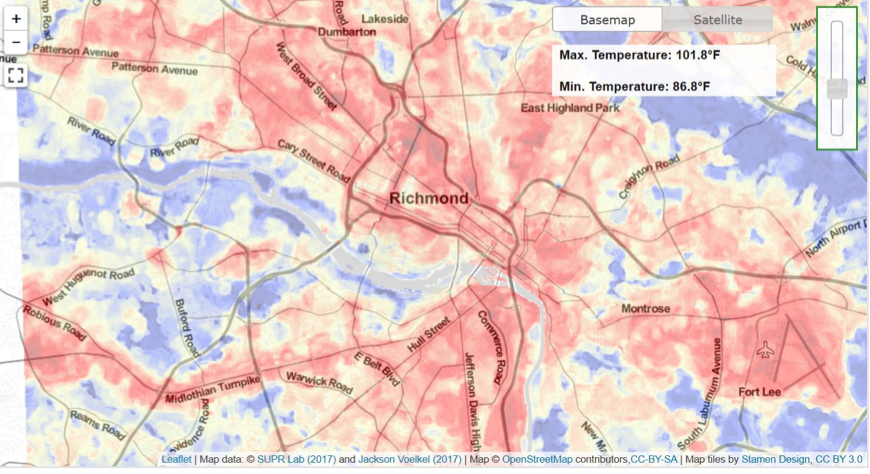
Students Solving Real-World Problems
Learning about the world around us can be exciting; it also can make a difference in our communities. High school students in Richmond and Augusta County, Virginia are now involved in a new pilot program putting them on the cutting edge of research into the intersection of the urban heat-island effect, how rooftop solar arrays impact on buildings’ energy use, and climate change.
Dr. Jeremy Hoffman, Chief Scientist at the Science Museum of Virginia, helped design the Throwing Solar Shade© (TSS) curriculum to build on the research he’s conducted to track real-time disparities in surface temperatures of different neighborhoods in the city of Richmond. Consistent with research on urban heat-islands across the nation, unshaded areas with heat-absorbing surfaces like parking lots, roads and rooftops can be ten degrees or more hotter than grassy areas shaded by trees and shrubs.
Dr. Tony Smith, CEO of Secure Futures and former MBA co-director at Eastern Mennonite University, worked closely with Dr. Hoffman in designing the program to include data from solar arrays and bringing in other collaborators and funders to the project.
Dr. Smith stated that “Jeremy is the rockstar of this program, and his work was the inspiration for us to consider how solar panels provide cooling to rooftops. I sought to complement his gifts by bringing together other partners, including the public school districts, VCU, NEED, and the Community Foundation of the Richmond Region donor advised fund, which provided partial funding for the program, matched by Secure Futures.”
By studying on-site solar array data, students will learn the scientific principles and research methods Hoffman uses and then apply them to their topics of inquiry.
Augusta County Public Schools now has six schools with rooftop solar power systems and one with a ground-mounted array. Richmond Public Schools has ten rooftop systems. Students will have access to data from temperature gauges both in the shade of the solar arrays and in the full sun on rooftops. A key point of investigation is exactly how that shading affects energy demand for heating and cooling in the buildings while tracking other environmental factors like wind, rain, and irradiance (the amount of power in sunlight at any given time).
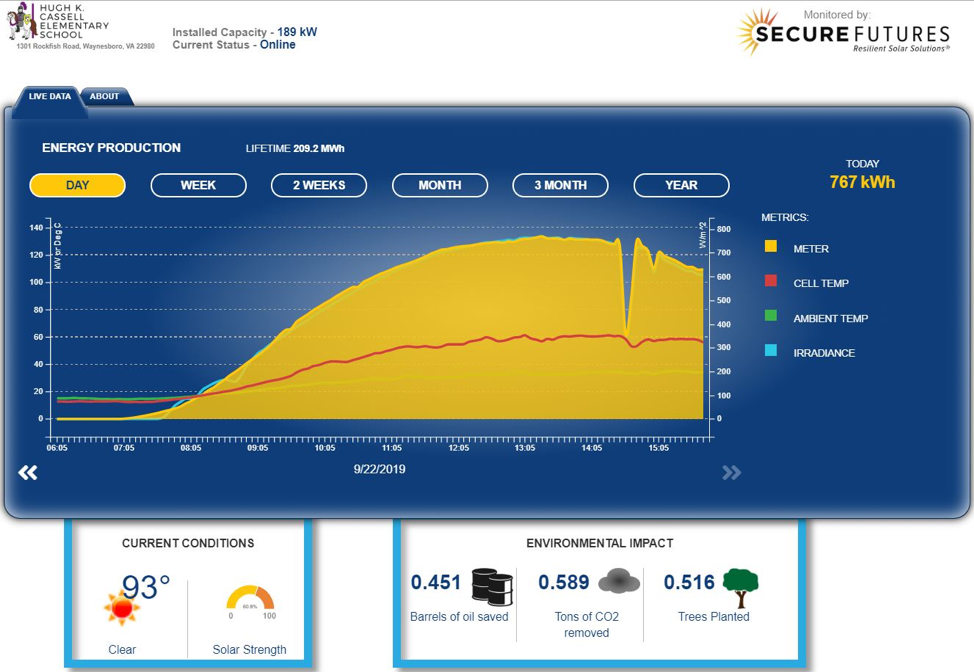
Learning and Improving
Along with the Science Museum of Virginia, another key participant in this project is the National Energy Education Development Project (NEED). This Virginia-based non-profit provides energy education resources and training around the country. Emily Hawbaker, NEED’s Director of Curriculum, collaborated with Dr. Hoffman, Dr. Smith, and their team to write the TSS curriculum.
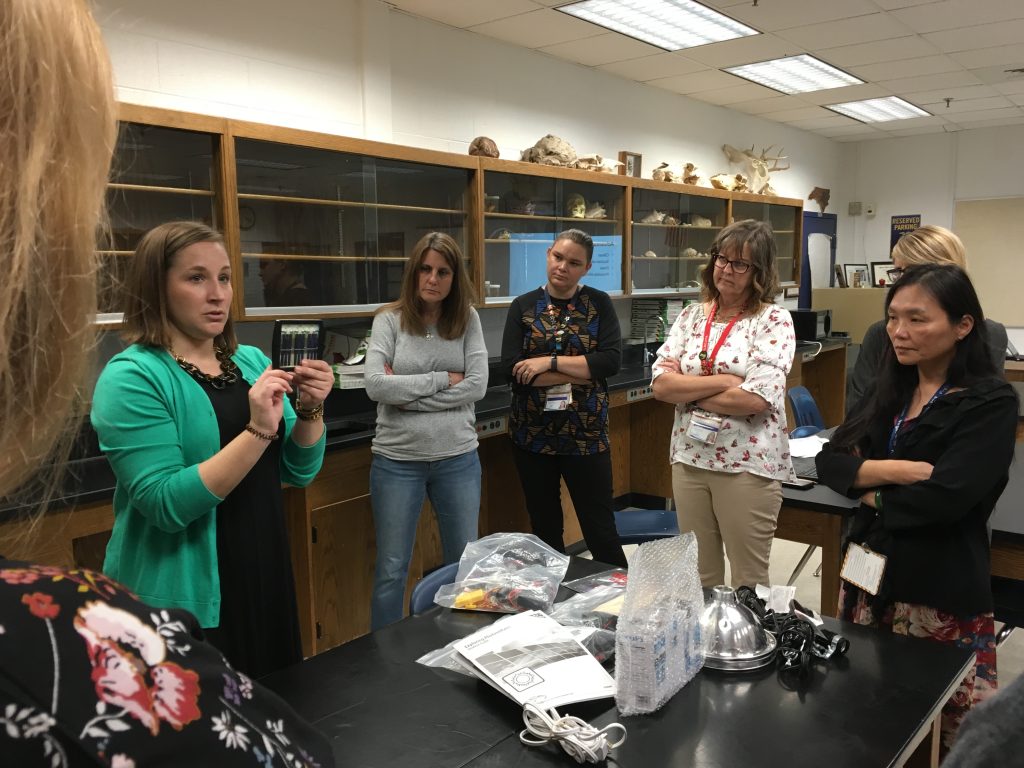
NEED has years of experience designing hands-on learning experiences for students of all ages. The TSS pilot offered a chance to build on some of their existing curricula to utilize the additional data streams included in this project.
Secure Futures staff collaborated with NEED to provide students with a variety of learning tools. Hugh Stoll, Chief Technology Officer, and Kelly McDonald, Senior Software Engineer, worked with Dr. Hoffman to design and install a variety of sensors on the solar rooftops to generate not only solar performance data, but a full spectrum of weather and air quality data for analysis by the student citizen scientists. Andrew Grigsby, Customer Solutions Manager, and Lucas Miller, Technical Coordinator worked with the schools on a weekly basis to host video calls for Dr. Smith and Dr. Hoffman to interact directly with students and teachers in their classrooms.
Incorporating Solar into Curricula
The Virginia Department of Education is developing an integrative framework of instruction to move beyond SOLs to a more comprehensive teaching approach – called the 5 Cs: critical thinking, creative thinking, communication, collaboration and citizenship skills. A team of education experts is already advising the Throwing Solar Shade© program administrators on how to adapt the program to this new framework.
Experts advising the program include Virginia Commonwealth University’s Metropolitan Education Research Consortium, where Dr. David Naff is Assistant Director of Research and Evaluation. Dr. Naff has designed surveys and conduct focus groups to measure how well this pilot program promote STEM goals as well as the 5 Cs. All of the partners will take lessons learned in this year’s pilot to develop TSS 2.0 which will be available to even more solar schools around the Commonwealth.
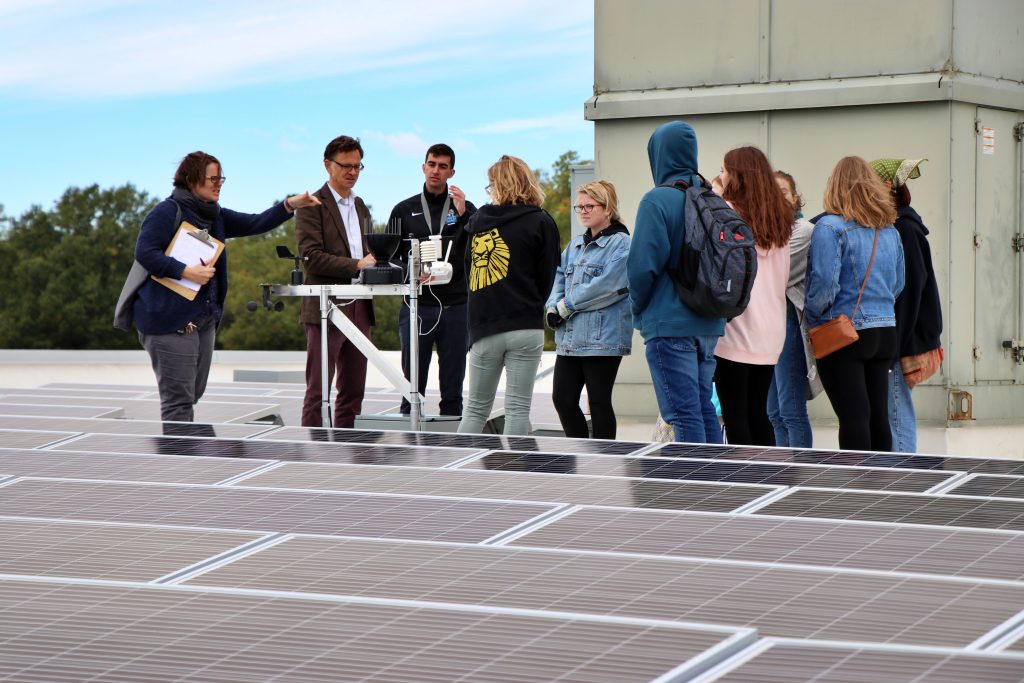
To follow the 5 Cs in our own way, Secure Futures staff have outfitted our drone with a high-resolution infrared scanner. Now, solar school students will also have access to infrared images taken closer to earth. Students can use creative and critical thinking skills to analyze thermal imagery.

The teachers from each participating school volunteered to take on this extra project. They began contributing to the planning and curriculum over the summer. In early September they met with Dr. Hoffman from SMV and Emily from NEED for a deep dive into the material they would be covering over the 10-week period.
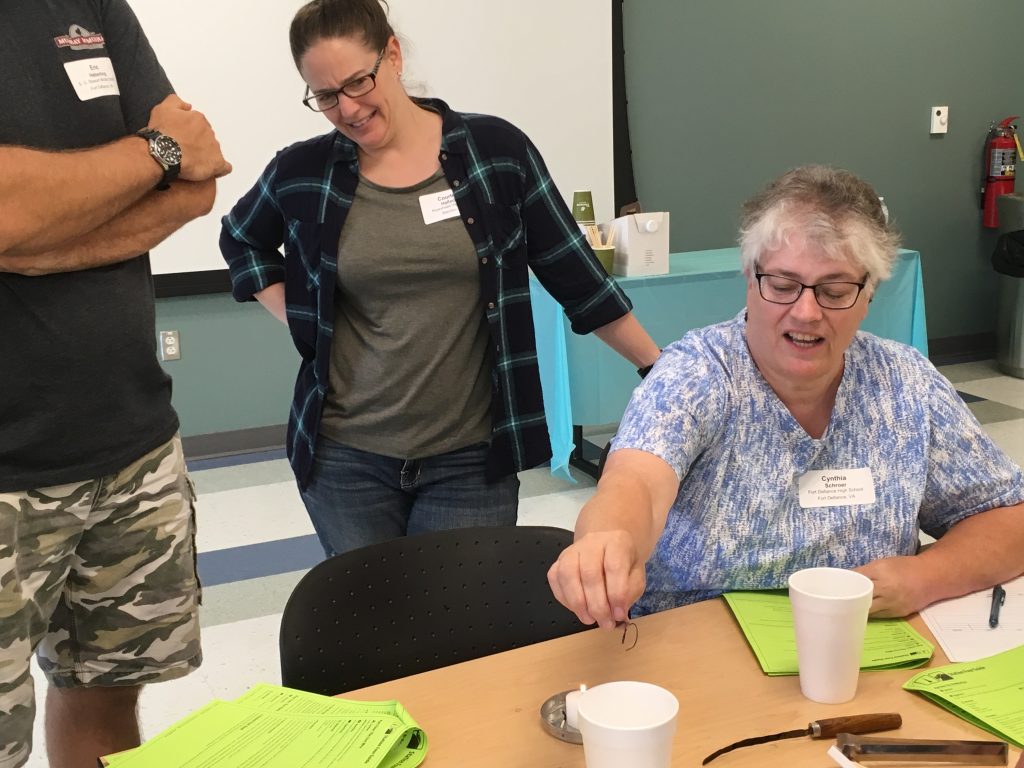
This was a room full of science nerds, so everyone left that day very excited to explore the data. “I wish I had a week just to dig into this website” said ACPS teacher Courtney Hallacher after Dr. Hoffman had introduced everyone to the images taken from Landsat 8 satellites and the Purple Air real-time air quality monitoring.
Next month, SMV will host a closing TSS event, but students will run the show. Classes from Fort Defiance High School and Riverheads High School in Augusta County will join students from Richmond’s Open High School to share their findings from TSS with the education advisers from VCU and teachers of the pilot Throwing Solar Shade© program, as well as with STEM and renewable energy leaders from across Virginia. Check back in with us in December to see what they found!